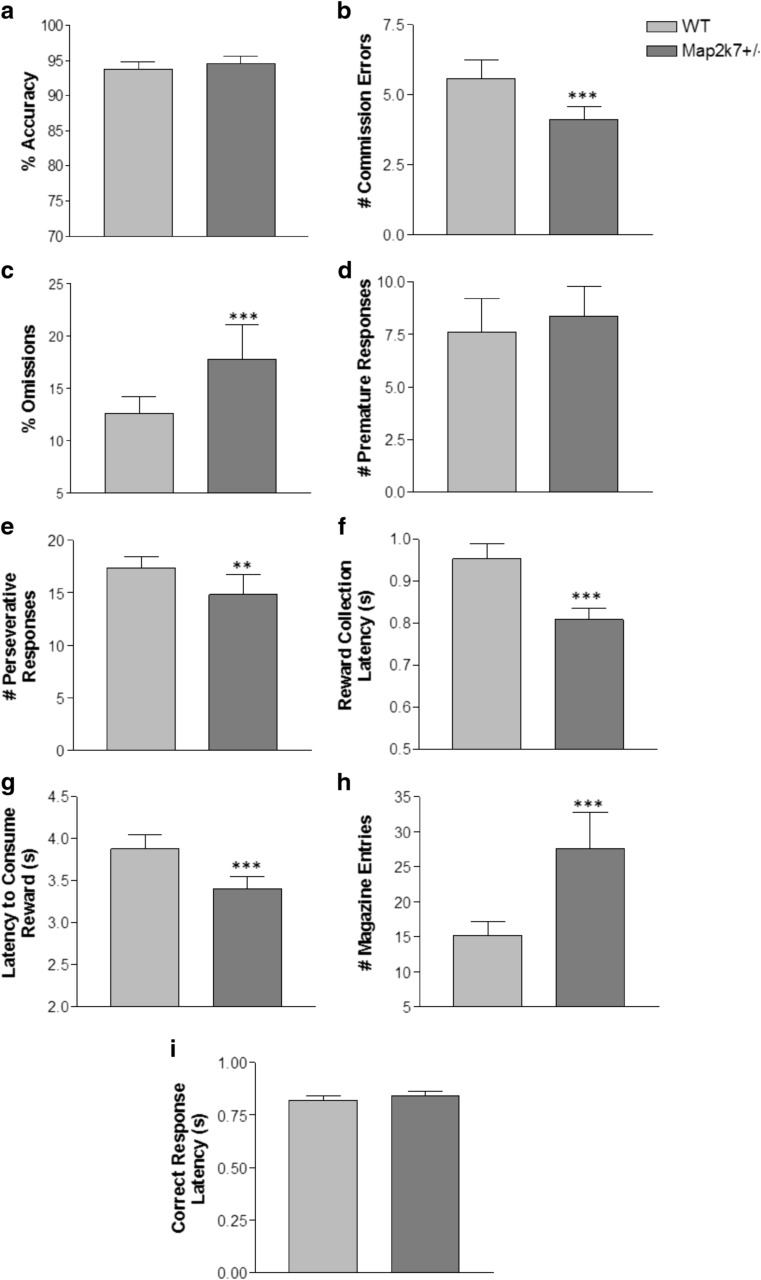Fig. 1.
Map2k7 +/− mice show an attentional deficit in the 5-CSRTT which is not due to impairments in motivation and/or motor ability. Map2k7 +/− mice perform with similar accuracy (a) and make slightly fewer commission errors (b) than WTs, miss more trials (c) and display no inhibitory control deficit (d, e). Map2k7 +/− mice display decreased reward collection (f) and consumption (g) latencies, make more entries into the reward magazine (h) and have similar correct response latencies (i) compared to WTs. Each bar represents the average of the last 5-day stable performance in the test stage. Data analysed by a two-way repeated measures ANOVA (with daily session as a within subject factor, genotype as a between subject factor and each individual mouse nested within genotype) with Tukey’s post hoc and are presented as mean ± standard error of the mean (SEM). **p < 0.01; ***p < 0.001, N WT = 15, N Map2k7+/− = 16

